
The room we are in has so much clutter that I feel like it could all collapse on top of us without warning. With the door and windows closed, the only thing that breaks through the absolute darkness in this claustrophobic scene is the light of a cell phone that illuminates from above an image of Our Lady of Guadalupe.
The members of the Ali Hernández family look at the statue with her new dress, holding hands, as if they were witnessing a miracle. “I wanted to dress her. My sister said to me, ‘Go for it. Maybe Our Lady wants you to dress her. I’ll help you,’” says Elizabeth Hernández, who, for many years, put flowers around Our Lady so she would grant her the miracle of having children.
Today is December 11 and the preparations for the Our Lady of Guadalupe festivities start early with three important figures as protagonists: this image of Our Lady, a wood doll and a cedar mare.
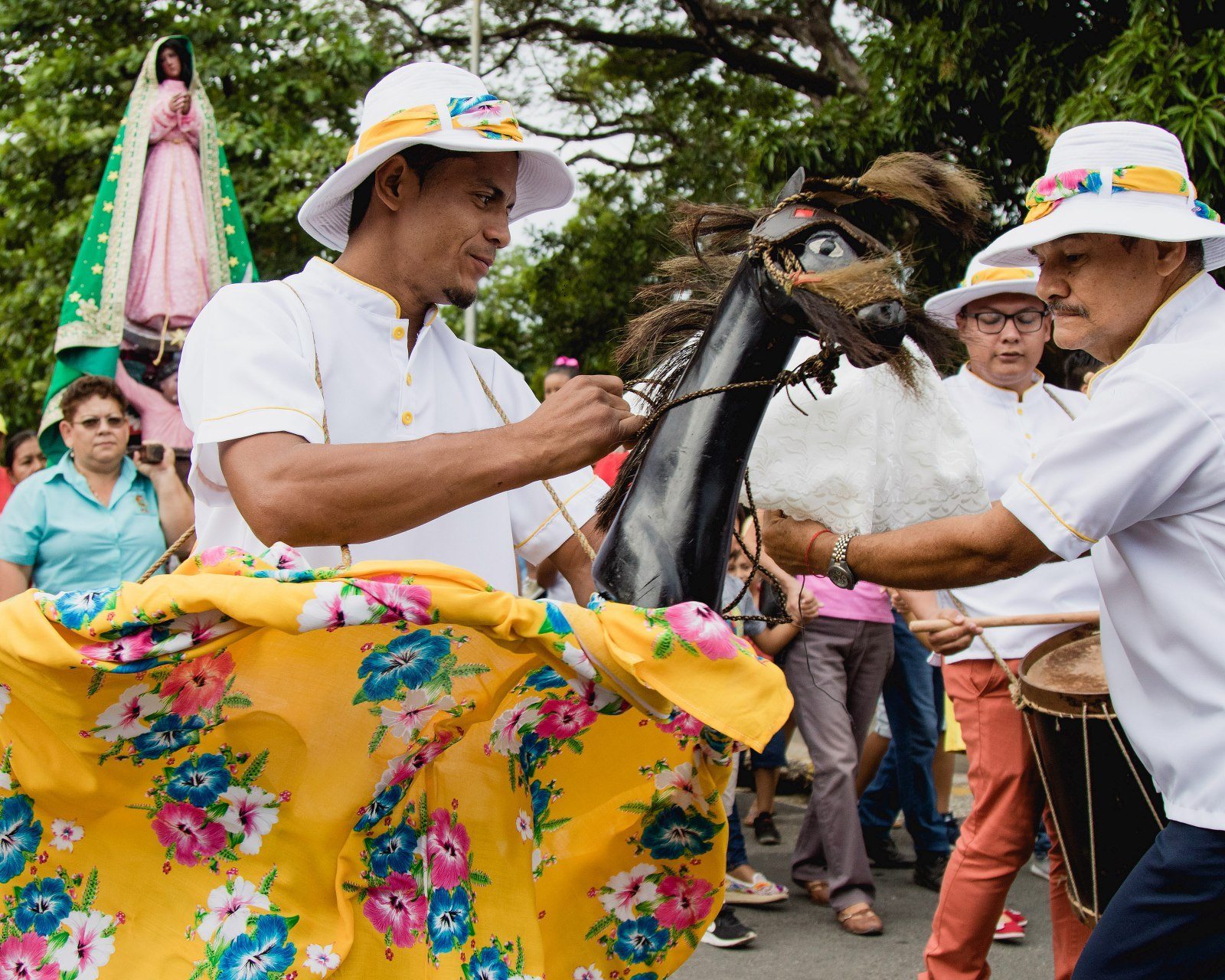
Gerardo Cárdenas (known as Tito) is in charge of dressing the mare and the doll. He is the captain of the day. He is the one that, early in the morning, takes the doll to Elvetia Bertarioni, the woman in charge of buying the girl’s dress who also bears the title “madam dresser of the doll.”
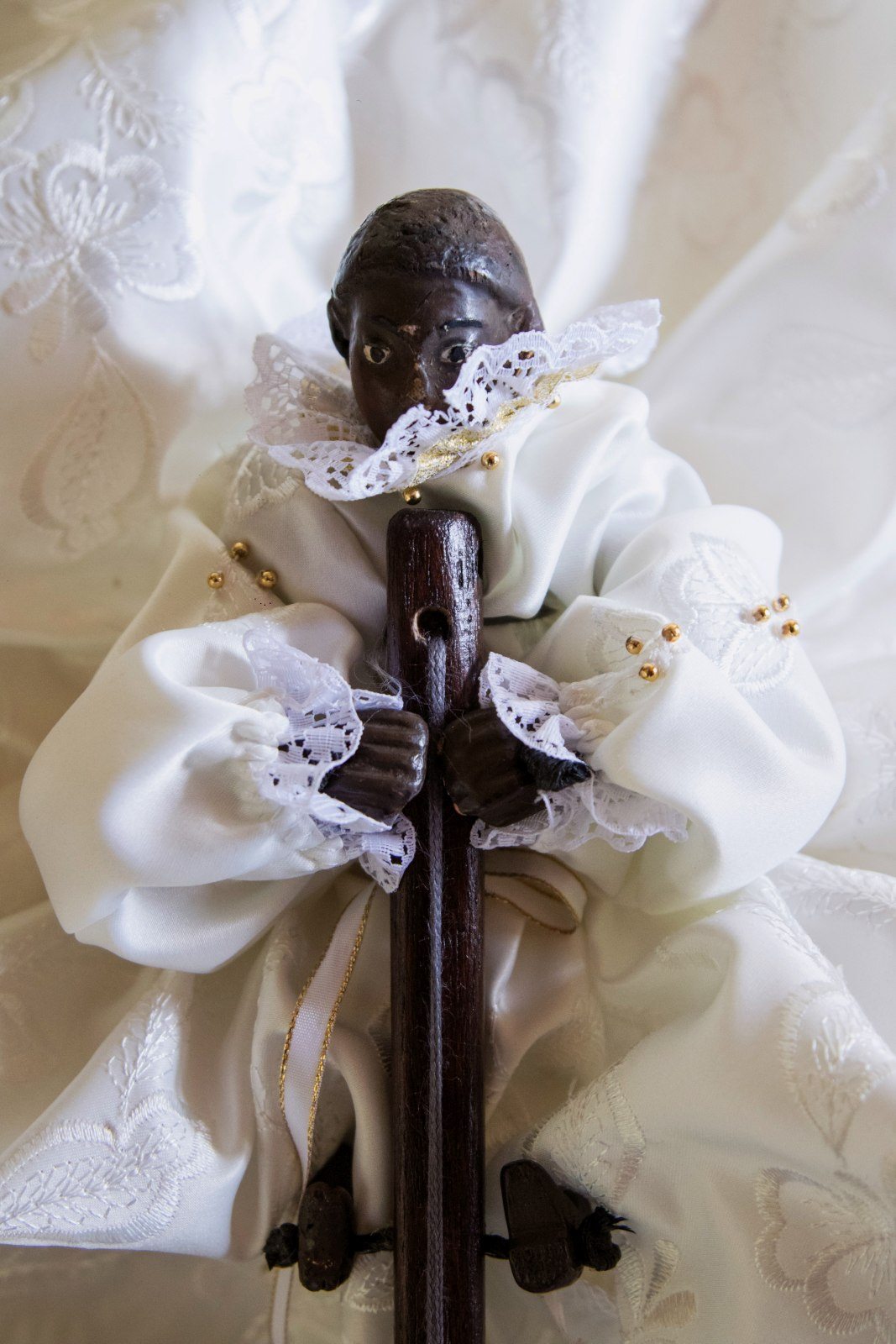
This process isn’t allowed to be seen by male eyes. “Only women can be inside the room, you know. She is a lady,” they had told me by phone. That’s why I had to wait in the garage where they prayed the rosary to the sound of marimba music.
Once the doll is dressed, Tito crosses downtown Nicoya with long strides on his way to dress the mare. While I try to keep up with him, Tito tells me that his kindergarten teacher taught him how to dance the mare and he explains what the festivities that honor Our Lady of Guadalupe consist of: they are celebrated every December 11 and 12, the legend says that a mare sent by Our Lady separated two brothers who were about to kill each other and he talked about the food, the names….For a novice on the topic like me, I needed a glossary by my side.
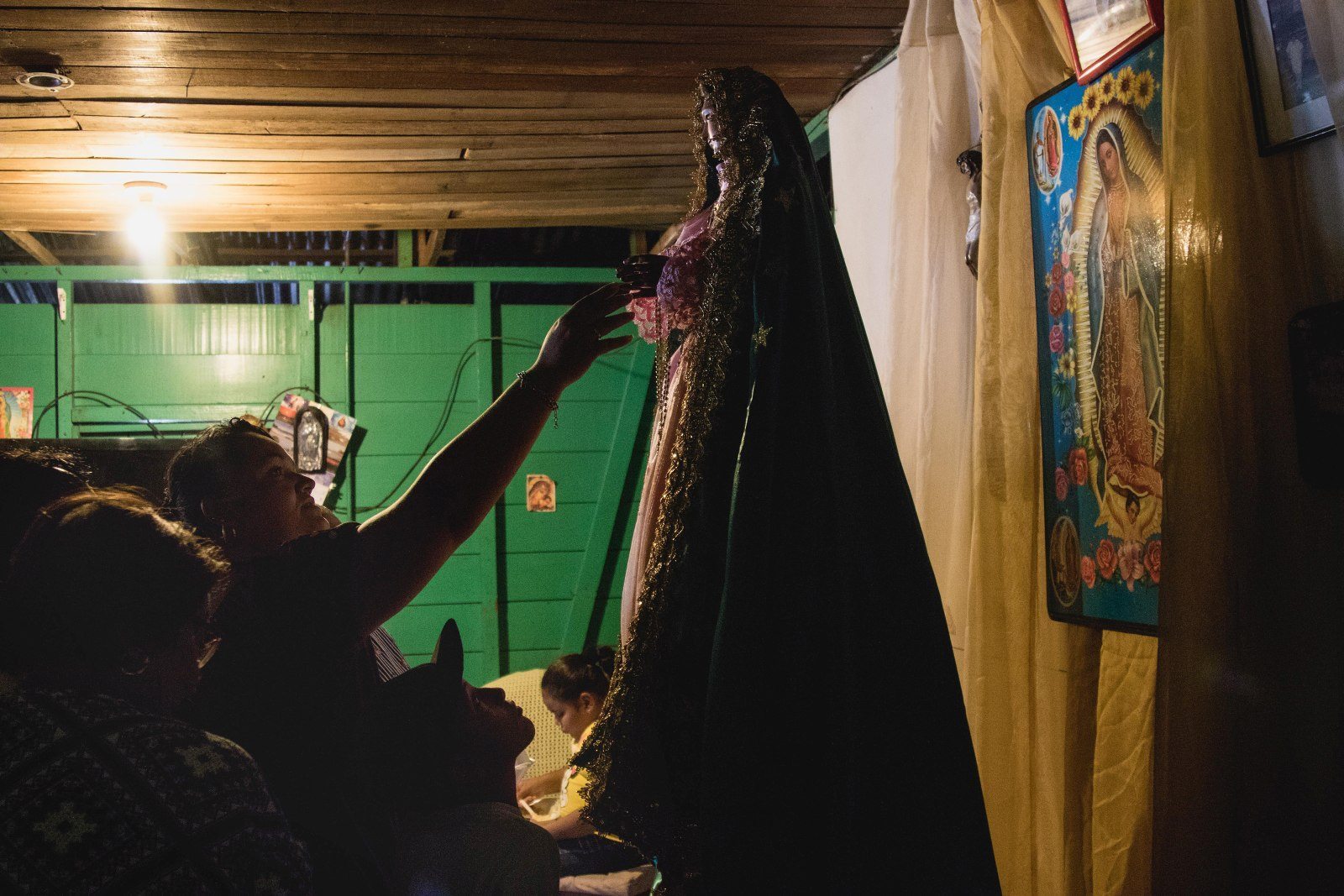
“She has been giving it all to me little by little because this year has been very difficult economically for everyone,” says Elizabeth, who provided food for the 100 people that attended her house while she dressed the virgin. Elizabeth works as a Spanish teacher at a night school in Nicoya and runs a restaurant at her house during the day.
Butlers, stewards, busboys, bosses, lawmakers, chairmen, commissioners, sheriffs, nizquezadoras, priostes and alguaciles, aren’t even half of the positions that he rattles off automatically.
These posts have been defined every November for almost 500 years at the Our Lady of Guadalupe Confraternity, a matriarchy of faithful that, throughout the year, organize the preparations and festivities for Our Lady. Only women vote, but the positions can be held by men.
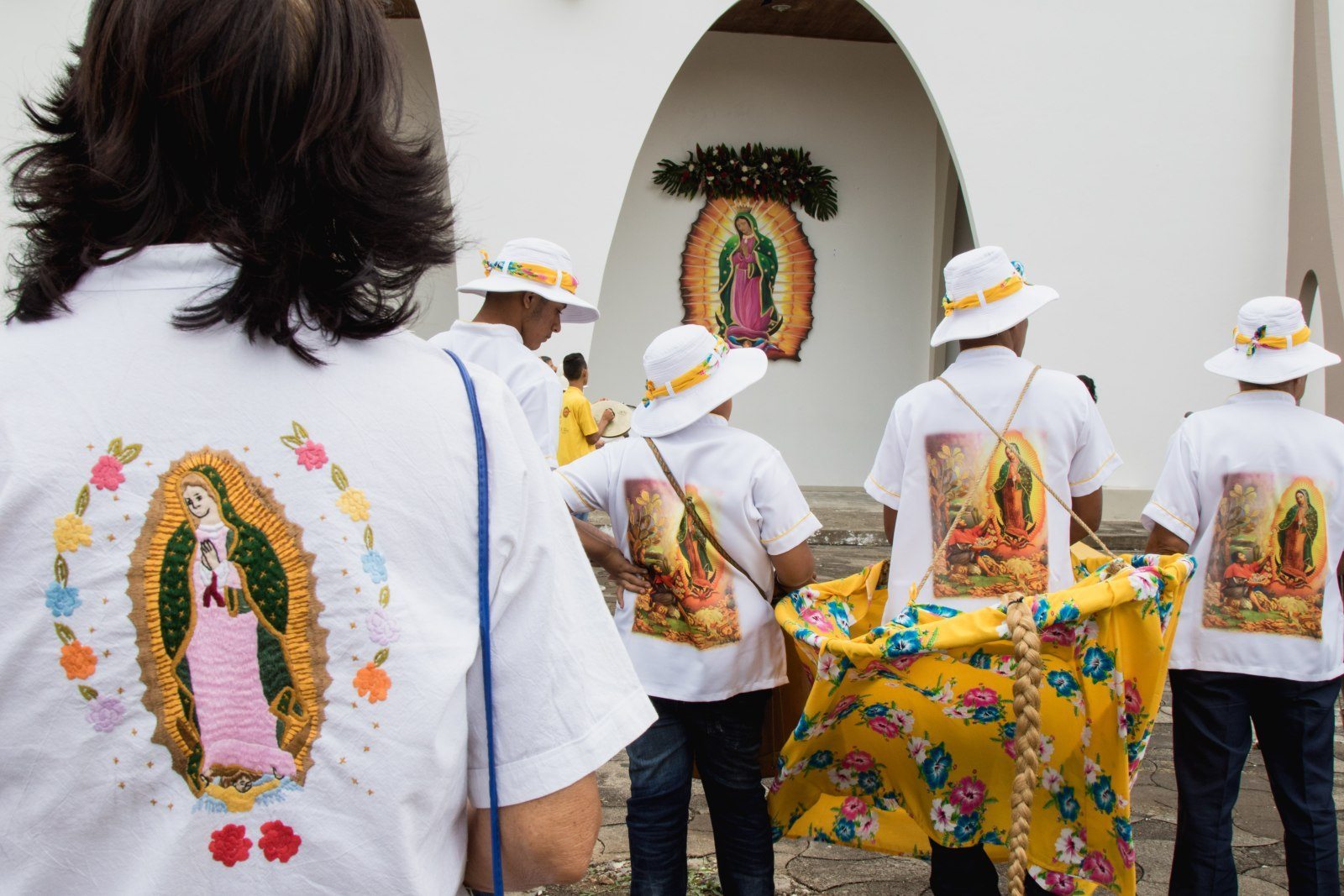
The personages that participate in the mare dance wait for Our Lady outside the church in order to join her in a parade to the confraternity. The group is made up of the mare carrier, the captain, the drummers, and the whistlers who play the flutes. José Torres, in charge of dressing the mare this year, financed all the clothes that they used.
A small, corner house with paintings of Chorotega pots on its facade is the confraternity base of operations, and it fills to the brim during the festivities. It’s no wonder why. By indigenous tradition, all the food is given away for free.
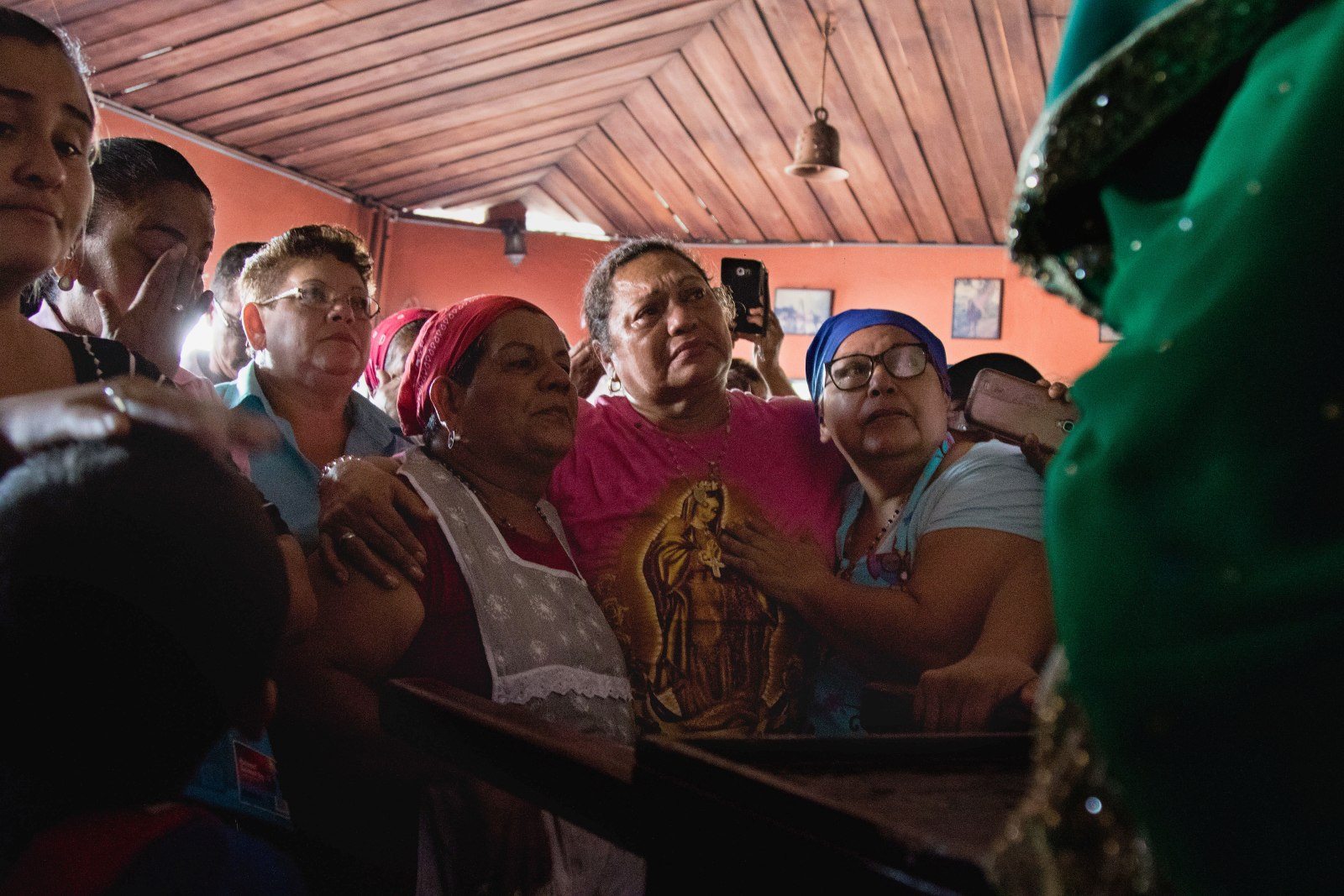
“I’ve been planning this for more than five years. Seeing Our Lady reminds me of my parents, who I was able to watch die old without any illness, just like I had asked Our Lady,” says María Félix Obando, this year’s stewardess, whose eyes fill with tears as Our Lady reaches the confraternity.
“If people want seconds, they should have seconds. This is for the people,” says María Félix Obando, this year’s stewardess.
Every year, Nicoya combines these ancient rituals where the whole town meets like large tribe to share indigenous drinks in cups made of calabash rind called jicaros, dance to the rhythm of a centenarian melody played by horns and drums that is passed down from generation to generation, and celebrate the arrival of the image of Our Lady of Guadalupe in Nicoya. The Nicoyan people have never been without chicheme (a fermented sweet corn drink) on December 12.
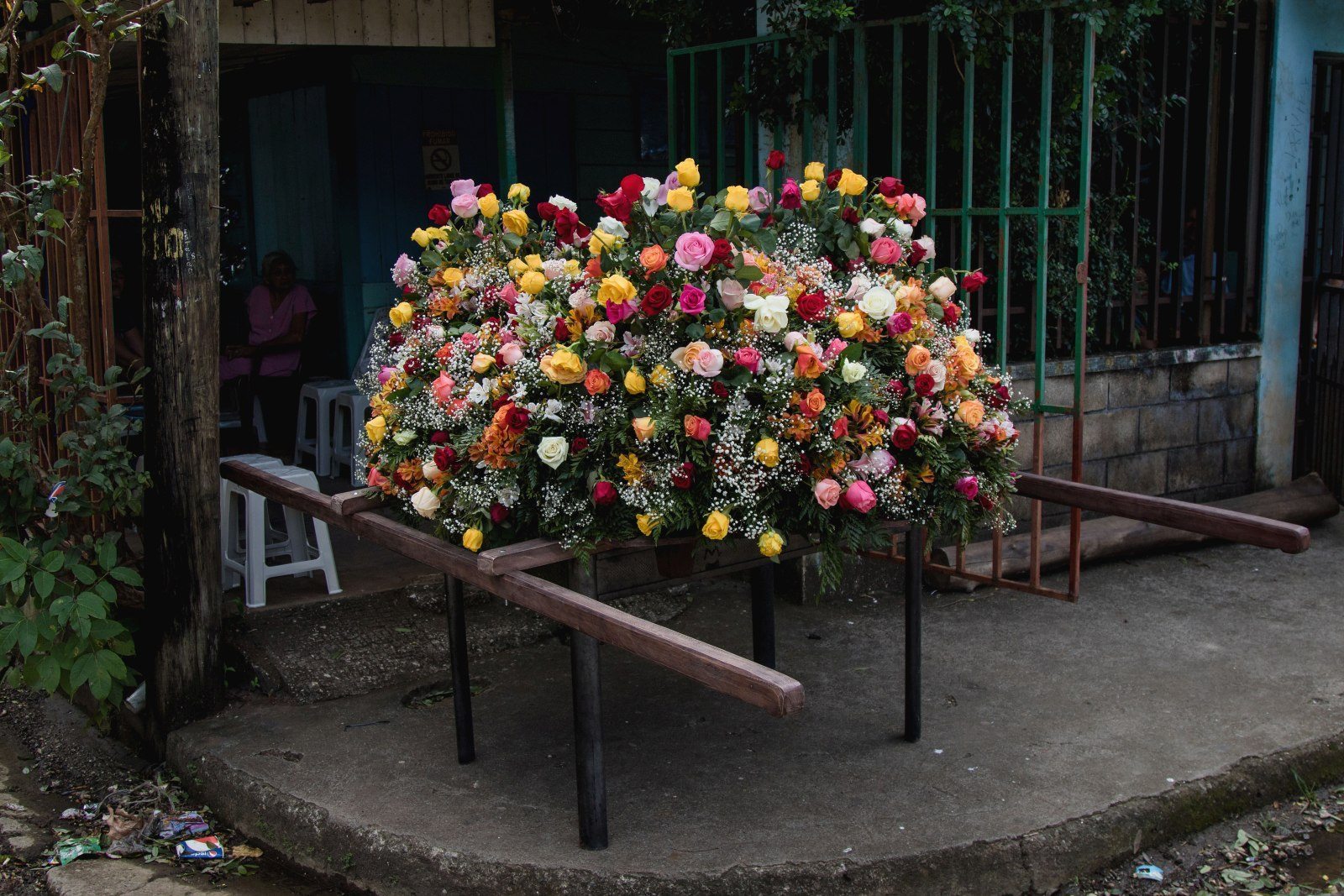
Eight people, 400 roses and more than three hours of work are needed to build the base that Our Lady is carried on during the parades.
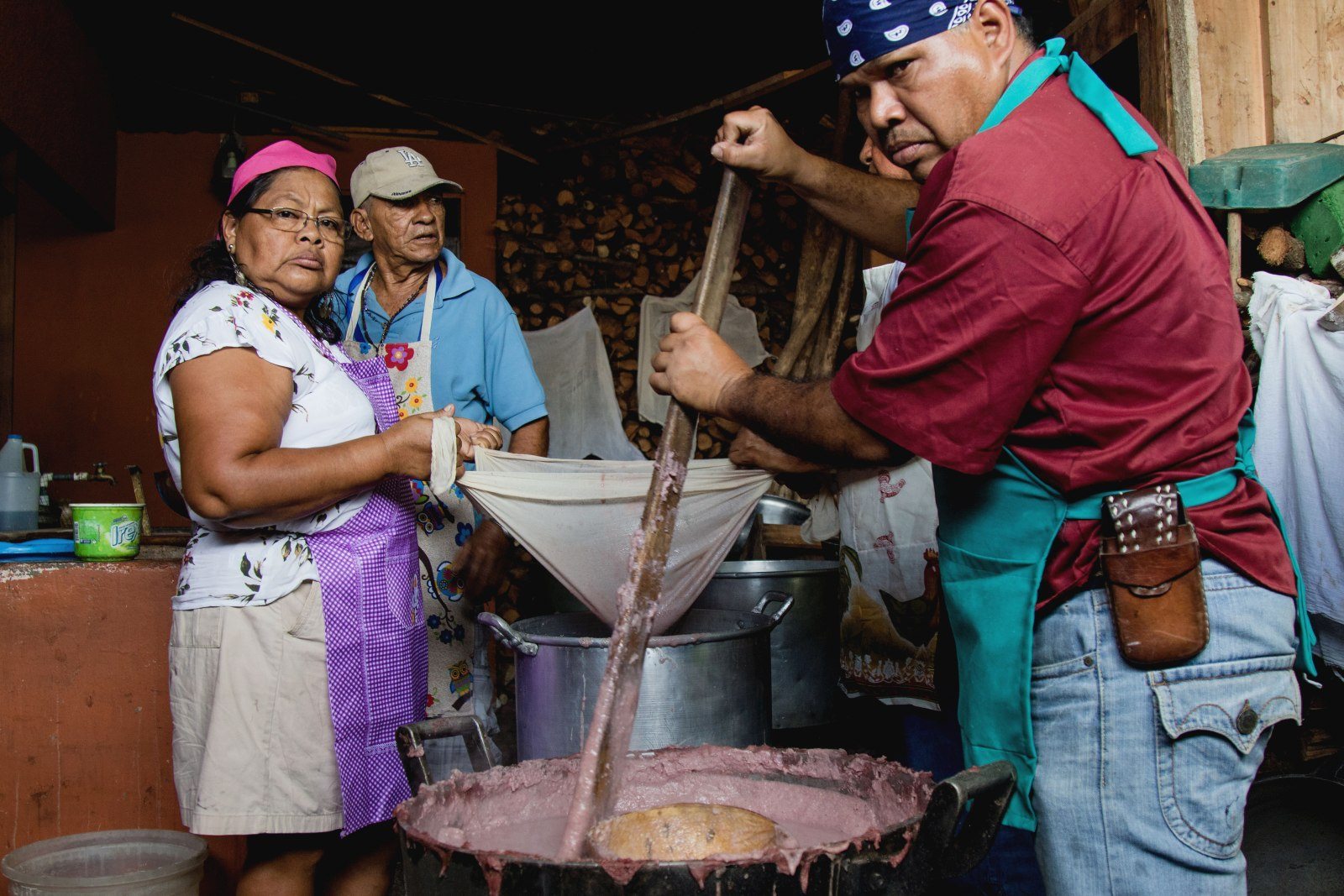
More than 50 cooks made food for 5,000 people during the festivities. At the confraternity’s kitchen, chicheme is prepared for all those who attend the celebrations. This drink, which is served in cups made of calabash rind, is made with blue corn, sugar and ginger.
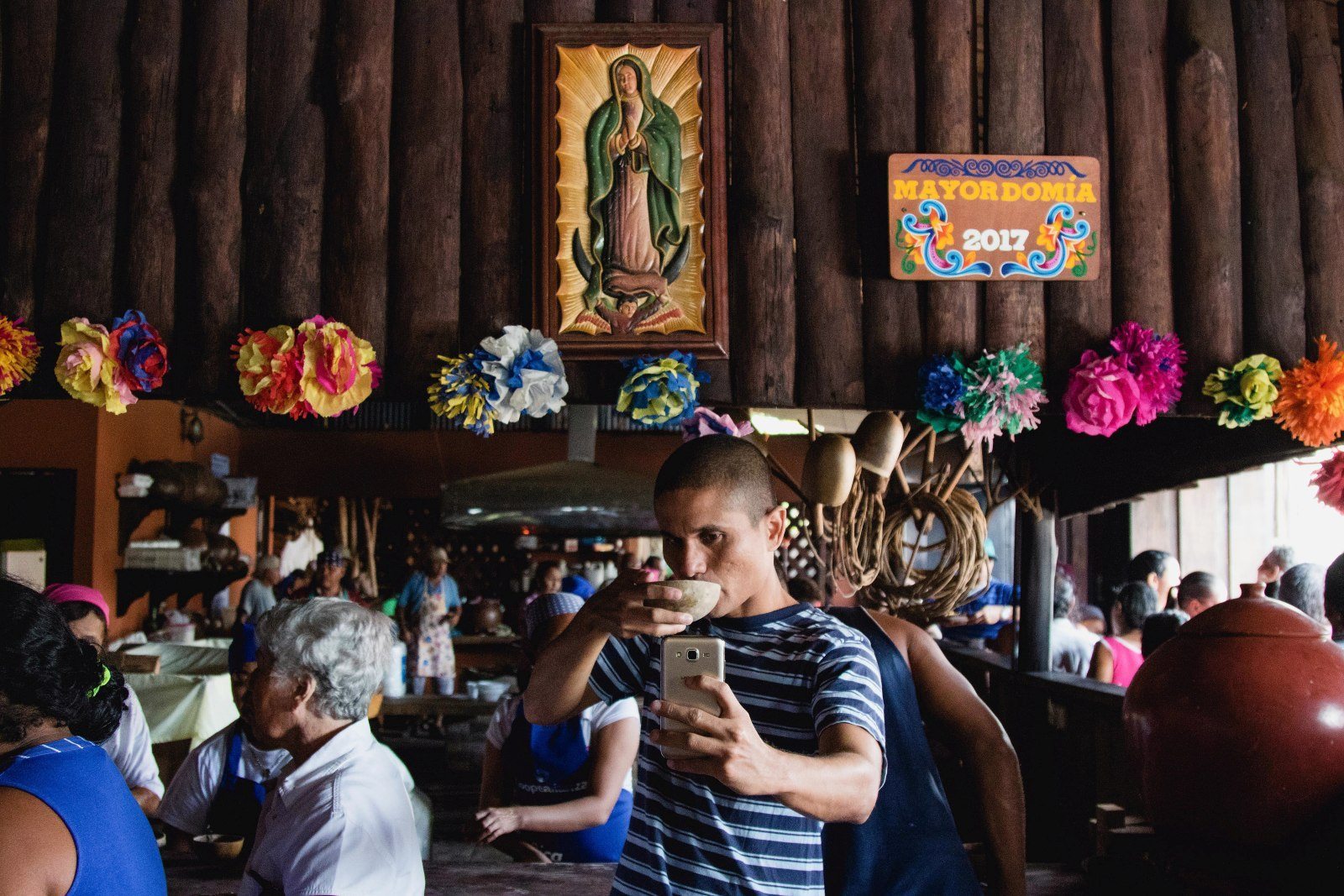
Some of the drinks and dishes that are handed out during these activities are chicheme, pozole, tiste, doughnuts, sweet bread and rice with beef.


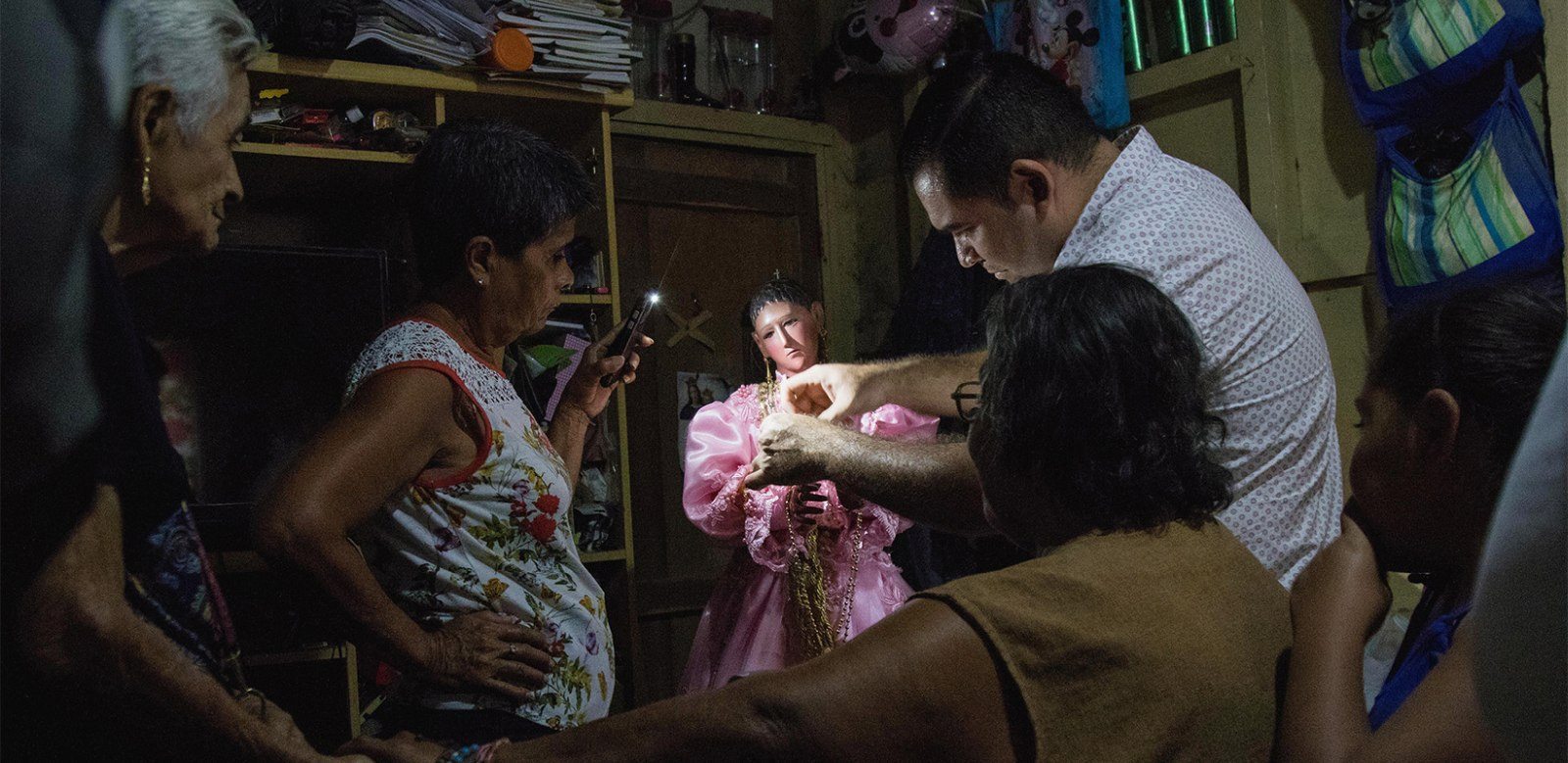
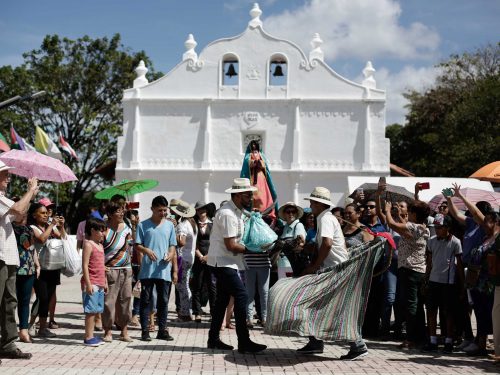
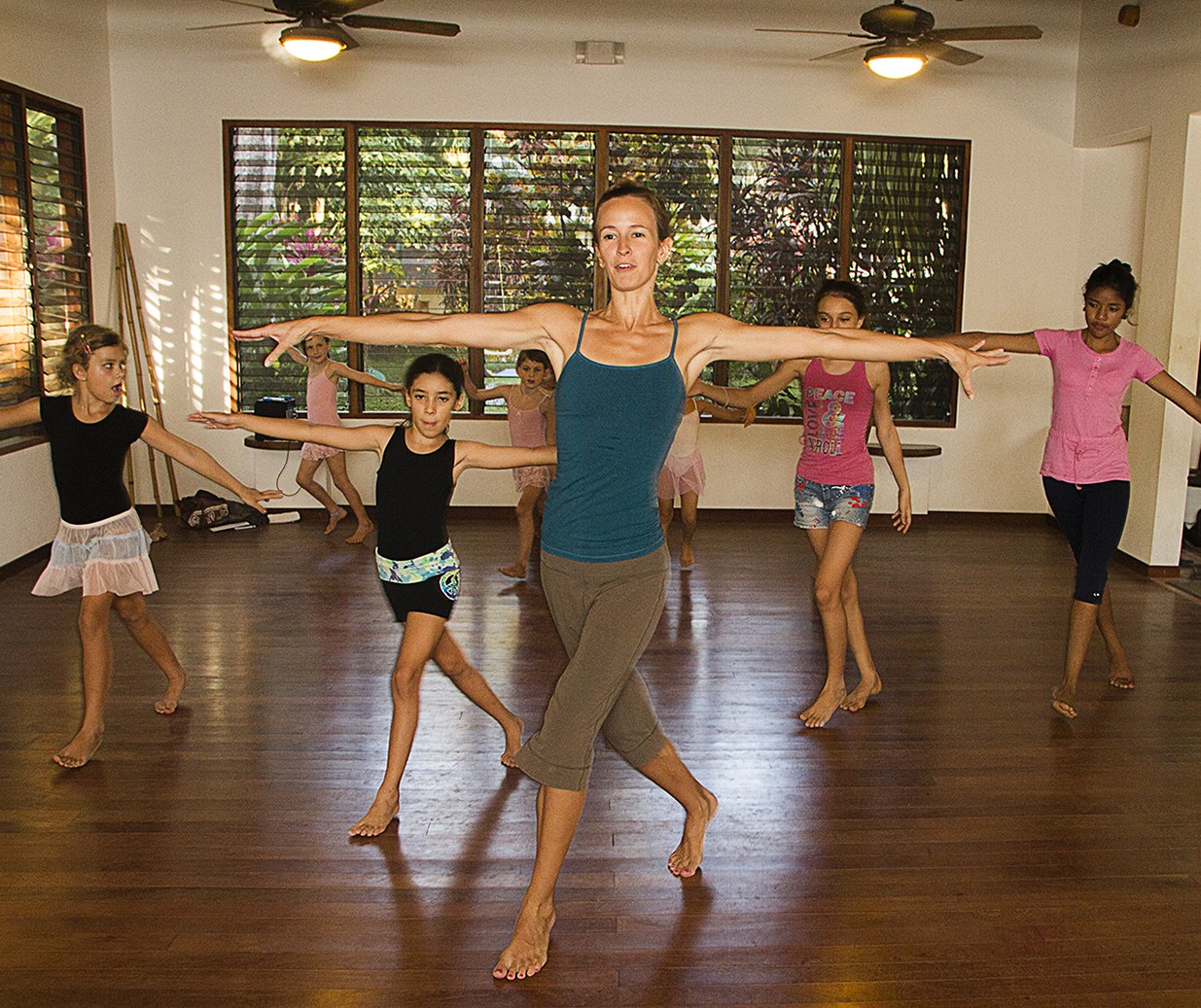
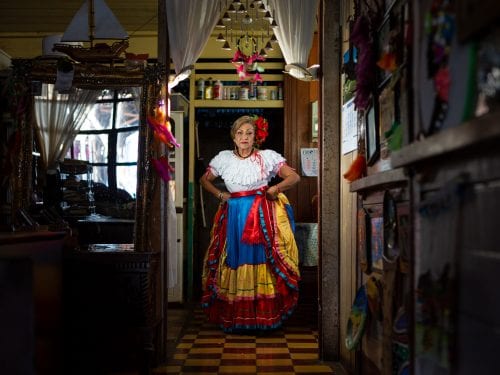

Comments